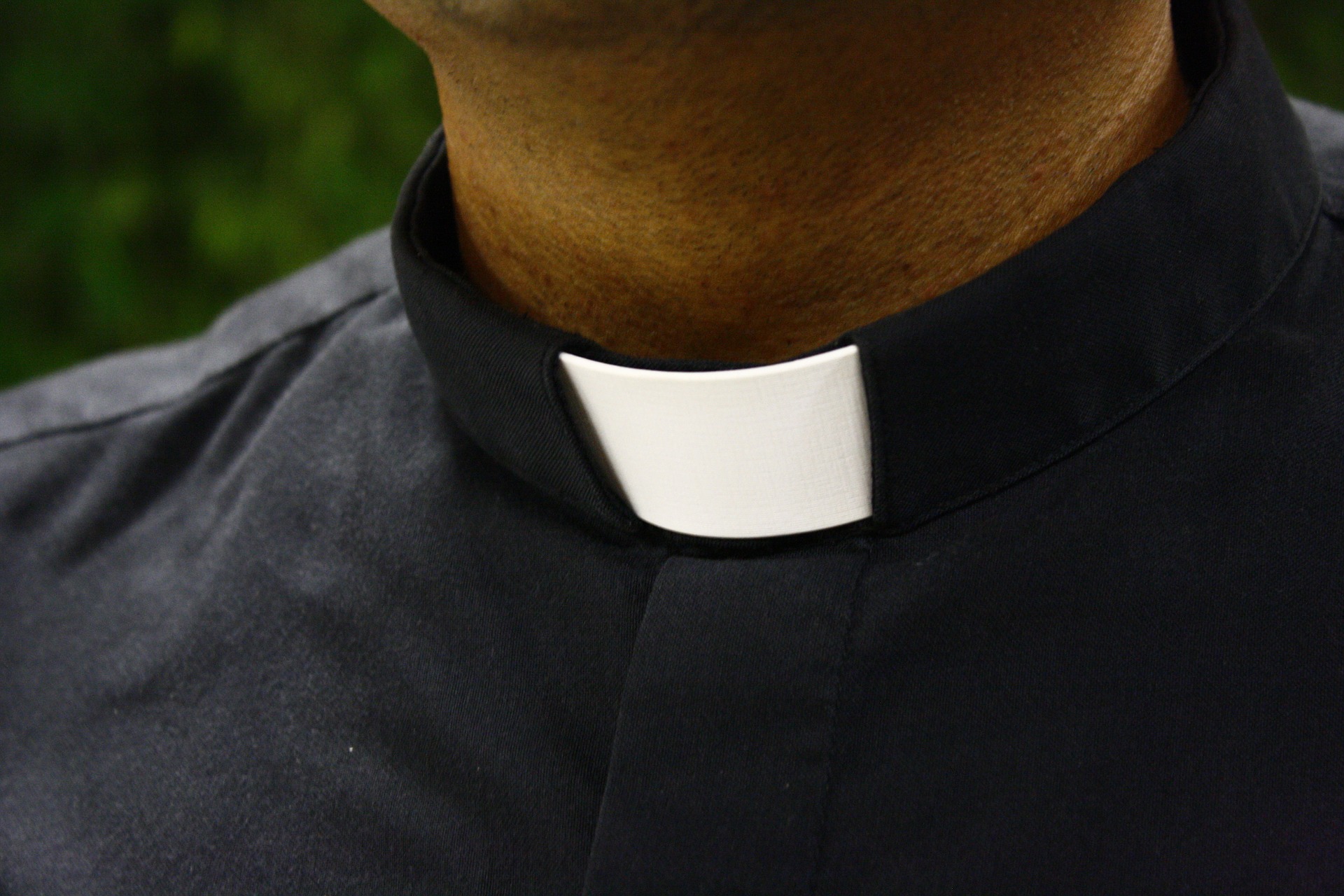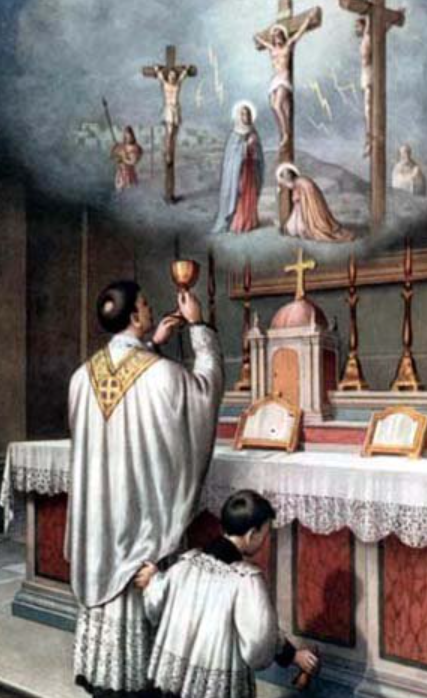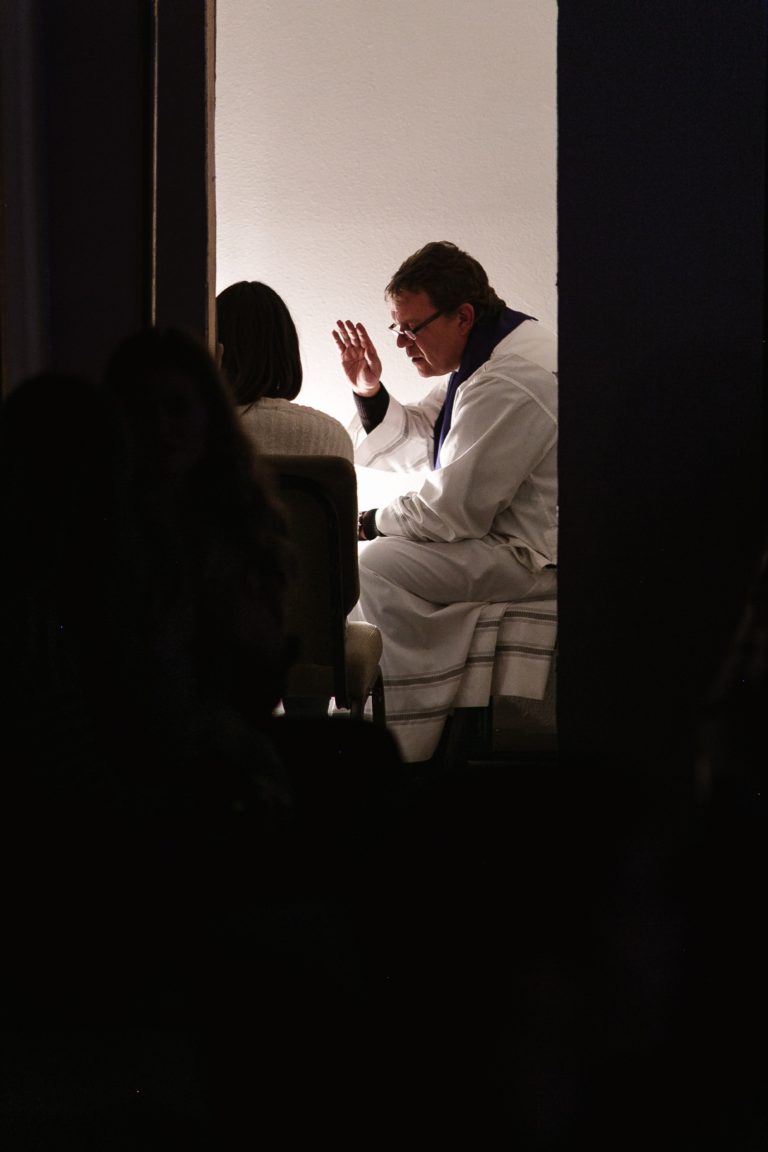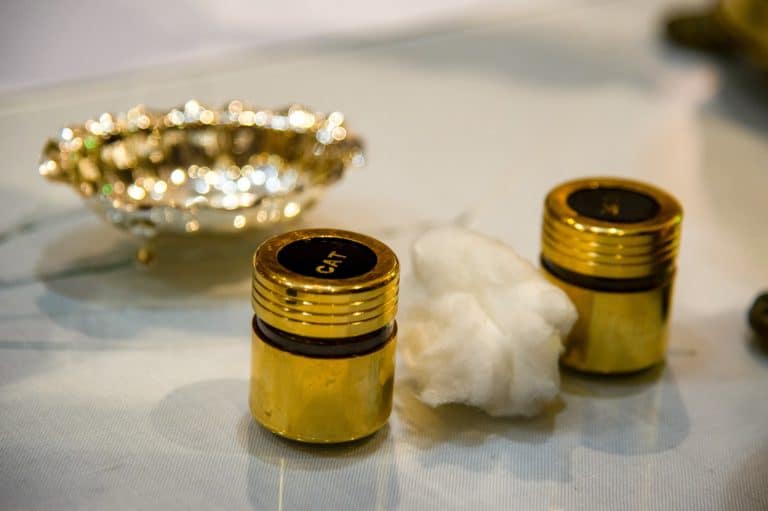What is the Sacrament of Holy Orders?
The Sacraments of Service to the Community are two – the Sacrament of Marriage and the Sacrament of Holy Orders. The Sacrament of Holy Orders pertains to ordained men in the Catholic Church that hold the office (or towards the office) of Priesthood and amongst them are is a hierarchical rank of Deacon, Priest and Bishop.
The Sacrament of Holy Orders was ordained by Jesus Christ, who is the High Priest, when He handed the authority to the chosen Apostles. The Sacrament was cemented at the Last Supper. The Catholic Church has received its’ authority from above, (see St Matthew 16:19). Through the growth of the Church, hierarchical roles or orders were instituted by the Church, i.e. Priest (Presbyter or elder or in Greek hiereus), Bishop (episkopos) and Deacon (diakonos).
The Sacraments of Initiation (Baptism, Confirmation and Holy Communion or Eucharist) and the Sacraments of Healing (Reconciliation and Extreme Unction or Anointing of the Sick) are necessary in the and to the economy of salvation.
These Sacraments are for the benefit of humanity and are freely available to choose. However, for these Sacraments to be administered and passed on with their abundant Grace and to be licit, they require someone to administer.
Therefore, Our Lord and Saviour Jesus Christ ensured that these Sacraments will be delivered through His Church and His Ministers throughout the ages.
Therefore, is the Sacrament of Holy Orders Biblical?
This is the next area that will be addressed and is often a point of conjecture especially since the Protestant revolution where the so called ‘reformers’ removed the need for the Priesthood.
Is the Sacrament of Holy Orders Biblical?
The formation of the Priestly order, responsibilities, vestments, rituals, and offerings were established in Exodus and Leviticus where we read the following:
The Priesthood was established in the Old Law i.e. the Mosaic Law, as instructed by God to Moses. Jewish tradition has it, that Aaron is recognised as the first High Priest to offer sacrifice to God. The Priesthood, like many events in the Old Law or Old Testament, are precursors to the New Law as established by the Son of God as the High Priest and Victim, we call these Typologies.
“And the priest that is anointed, and whose hands are consecrated to do the office of the priesthood in his father’s stead, shall make atonement. And he shall be vested with the linen robe and the holy vestments. And he shall expiate the sanctuary and the tabernacle of the testimony and the altar: the priest also and all the people.” (Leviticus 16:32-33).
Here we see the words anointing of the priest and his hands are consecrated. Also, the priest is to be vested with linen robes and vestments. The Priestly role is to offer atonement and expiation on behalf of the people and priests at the sanctuary, tabernacle, and altar. These are familiar words to Catholics.
Further, in Exodus, Aaron and his sons, were to continue this Priestly practice as we read:
“And the holy vesture, which Aaron shall use, his sons shall have after him, that they may be anointed, and their hands consecrated in it.” (Exodus 29:29)
The hierarchical nature of the Priesthood takes shape in the Old Law as we read in Leviticus
“The high priest, that is to say, the priest who is the greatest among his brethren, upon whose head the oil of unction hath been poured; and whose hands have been consecrated for the priesthood; and who hath been vested with the holy vestments. He shall not uncover his head: he shall not rend his garments.” (Leviticus 21:10).
Prior to the establishment of the Priesthood by God formally, the King of Salem and High Priest Melchisedech (Hebrew ‘King of Righteousness’) was offering bread and wine. This is a typology of a future offering – the Body and Blood of Jesus under the appearance of bread and win at the Last Supper for all generations and the world, as is witnessed at every Catholic Mass.
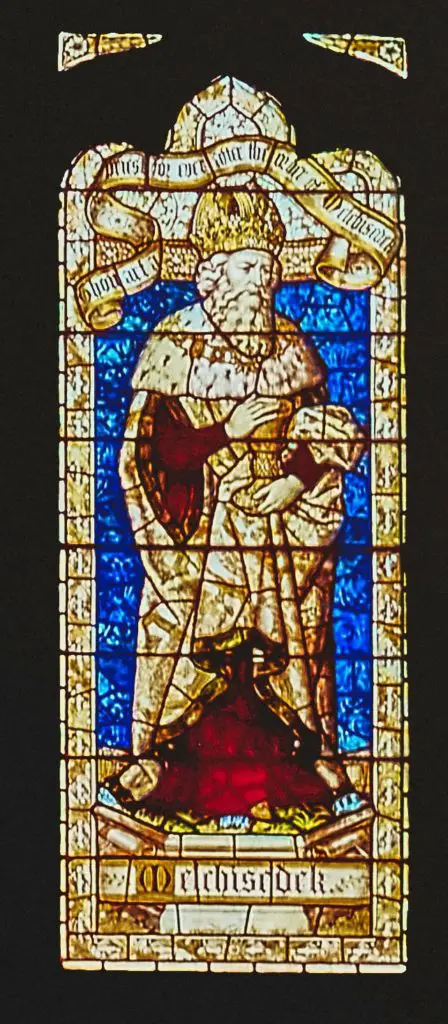
“But Melchisedech, the king of Salem, bringing forth bread and wine, for he was the priest of the most high God, Blessed him, and said: Blessed be Abram by the most high God, who created heaven and earth. And blessed be the most high God, by whose protection, the enemies are in thy hands. And he gave him the tithes of all.” (Genesis 14:18-20)
The Priest and Priesthood is eternal as the Psalmist writes:
“The Lord hath sworn, and he will not repent: Thou art a priest for ever according to the order of Melchisedech.” (Psalm 109:4)
In Hebrews, the connection to the order of Priesthood is made clear, that Jesus is the forerunner and has entered the Priesthood which will be made eternal.
“Where the forerunner Jesus is entered for us, made a high priest for ever according to the order of Melchisedech.” (Hebrews 6:20).
The Old Law or Old Testament will never be perfected until the Priest and Victim are One of the same Person. Jesus is the High Priest and that His Sacrifice will replace all sacrifices and be perfected through Him. The Old Law sacrifices offered by the High Priests at the altar and later in the Temple were of Heavenly origin, however fallible through human offering.
Mankind had been called by God to offer sacrifice for the fallen human nature. Jesus, the Messiah would offer a perfect sacrifice that would be offered for all generations and by all generations through the Sacrament of Holy Orders. Understanding the purpose of the Old Testament and that the Old Law directs all to the Messiah. Where in the New Testament do we see the sacrificial offerings so evident in the Old Law other than the actions of Jesus. Offering sacrifice to appease God is throughout the Judeo-Christian tradition but culminates through Jesus’ suffering, death and resurrection.
Did Jesus will this to end?
Absolutely not! The instructions of Jesus for this sacrificial offering to continue through His words, “Do this is commemoration of me”. This sacrifice is not just a symbolic gesture but an actual offering, a representation of Calvary. Where do we see this continue to this day, but only in the Roman Catholic Church and those Eastern Orthodox Churches that hold true through Apostolic Tradition.
How did Jesus institute the Sacrament of Holy Orders?
Jesus calls twelve Apostles
Through the ministry of Jesus, which lasted approximately three years, Jesus prepared for and established His Church on earth. He begins by choosing the twelve. To understand the nature of the Priesthood, it is necessary to follow the actions of Jesus.
“And he made that twelve should be with him, and that he might send them to preach. And he gave them power to heal sicknesses, and to cast out devils. And to Simon he gave the name Peter: And James the son of Zebedee, and John the brother of James; and he named them Boanerges, which is, The sons of thunder. And Andrew and Philip, and Bartholomew and Matthew, and Thomas and James of Alpheus, and Thaddeus and Simon the Cananean: And Judas Iscariot, who also betrayed him.” (St Mark 3:14-19).
Jesus not only chooses Hi Apostles, the first Priests, He gave them power to heal sicknesses and to cast out devils. This would be the only power that He would give them.
What is also significant is that Jesus chose from the disciples (His followers) twelve that He called Apostles as we read in St Luke’s Gospel:“And it came to pass in those days, that he went out into a mountain to pray: and he passed the whole night in the prayer of God. And when day was come, he called unto him his disciples: and he chose twelve of them (whom also he named apostles): Simon, whom he surnamed Peter, and Andrew his brother, James and John, Philip and Bartholomew, Matthew and Thomas, James the son of Alpheus, and Simon who is called Zelotes, And Jude the brother of James, and Judas Iscariot, who was the traitor.” (St Luke 6:12-16).
Jesus gives the Apostles authority to Baptise (Sanctify), Teach and Govern
The Church established through the Apostles by Jesus is given the threefold directive to Teach, Sanctify and Govern.
“And Jesus coming, spoke to them, saying: All power is given to me in heaven and in earth. Going therefore, teach ye all nations: baptizing them in the name of the Father and of the Son and of the Holy Ghost. Teaching them to observe all things whatsoever I have commanded you. And behold I am with you all days, even to the consummation of the world.” (St Matthew 28:18-20).
Jesus gives the Apostles authority to forgive and retain sins
Through the authority of Jesus and receiving the Holy Spirit, the Apostles are given the authority to forgive sins and to retain sins.
“He said therefore to them again: Peace be to you. As the Father hath sent me, I also send you. When he had said this, he breathed on them; and he said to them: Receive ye the Holy Ghost. Whose sins you shall forgive, they are forgiven them: and whose sins you shall retain, they are retained.” (St John 20:21-23).
“And that penance and remission of sins should be preached in his name, unto all nations, beginning at Jerusalem.” (St Luke 24:47).
Jesus institutes the Mass and Holy Orders at the Last Supper
Never is it made clearer that Jesus instituted the Mass that would be carried out by all generations and through the Priesthood than at the Last Supper.
“And taking bread, he gave thanks and brake and gave to them, saying: This is my body, which is given for you. Do this for a commemoration of me. In like manner, the chalice also, after he had supped, saying: This is the chalice, the new testament in my blood, which shall be shed for you.” (St Luke 22:19-20)
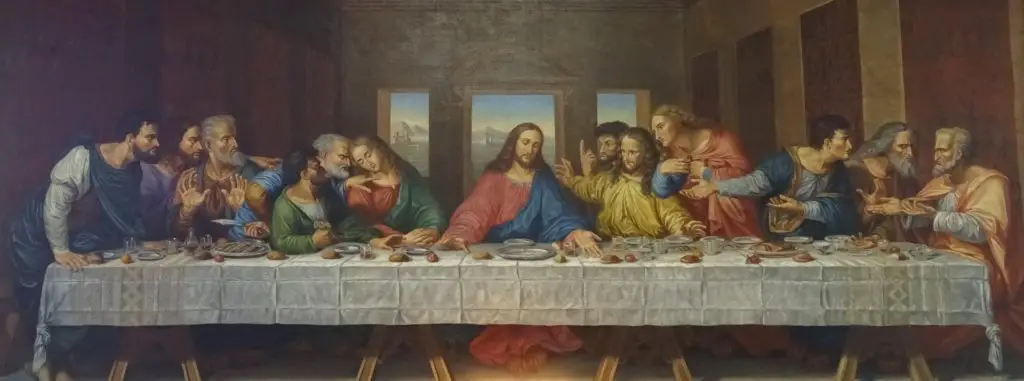
Also,
“And whilst they were at supper, Jesus took bread and blessed and broke and gave to his disciples and said: Take ye and eat. This is my body. And taking the chalice, he gave thanks and gave to them, saying: Drink ye all of this. For this is my blood of the new testament, which shall be shed for many unto remission of sins. And I say to you, I will not drink from henceforth of this fruit of the vine until that day when I shall drink it with you new in the kingdom of my Father.” (St Matthew 26:26-29).
Apostles continued the Sacrament of Holy Orders
Following the Ascension of Jesus and the coming of the Holy Spirit the Apostles and their successors continued the succession of the Priesthood. Not only is this evident throughout the New Testament, but the establishment of a hierarchical structure also begins to take place as the Christian Church grows and expands.
Matthias replaces Judas in the ministry of the Apostles
The Apostles whilst gathered in the upper room awaiting the Holy Spirit, saw it in their wisdom and authority to appoint one of the followers of Jesus to the Apostleship.
“And they appointed two, Joseph, called Barsabas, who was surnamed Justus, and Matthias. And praying, they said: Thou, Lord, who knowest the heart of all men, shew whether of these two thou hast chosen, To take the place of this ministry and apostleship, from which Judas hath by transgression fallen, that he might go to his own place. And they gave them lot, and the lot fell upon Matthias, and he was numbered with the eleven apostles.” (Acts 1:23-26)
Paul and Barnabas are chosen for the work:
“And as they were ministering to the Lord and fasting, the Holy Ghost said to them: Separate me Saul and Barnabas, for the work whereunto I have taken them.” (Acts 13:2)
Yet others continue to be ordained by the Apostles:
“And when they had ordained to them priests in every church and had prayed with fasting, they commended them to the Lord, in whom they believed.” (Acts 14:22).
Some of the Priests are made Bishops (‘overseers of the Church’)
“Take heed to yourselves and to the whole flock, wherein the Holy Ghost hath placed you bishops, to rule the Church of God which he hath purchased withhis own blood.” (Acts 20:28)
St Paul speaks about many ministries in the Church but all part of one body
“For as in one body we have many members, but all the members have not the same office: So we, being many, are one body in Christ; and every one members one of another: …” (Romans 12:4-5).
St Paul gives authority to cities to continue to ordain priests and bishops with conditions
“For this cause I left thee in Crete: that thou shouldest set in order the things that are wanting and shouldest ordain priests in every city, as I also appointed thee: If any be without crime, the husband of one wife. having faithful children, not accused of riot or unruly. For a bishop must be without crime, as the steward of God: not proud, not subject to anger, nor given to wine, no striker, not greedy of filthy lucre: But given to hospitality, gentle, sober, just, holy, continent: Embracing that faithful word which is according to doctrine, that he may be able to exhort in sound doctrine and to convince the gainsayers.” (Titus 1:5-9)
The imposition of hands as part of the priestly ordination
“Neglect not the grace that is in thee, which was given thee by prophecy, with imposition of the hands of the priesthood.” (1 Timothy 4:14).
Priesthood is a calling, offering gifts and sacrifice for sins and the everlasting character of the Priesthood
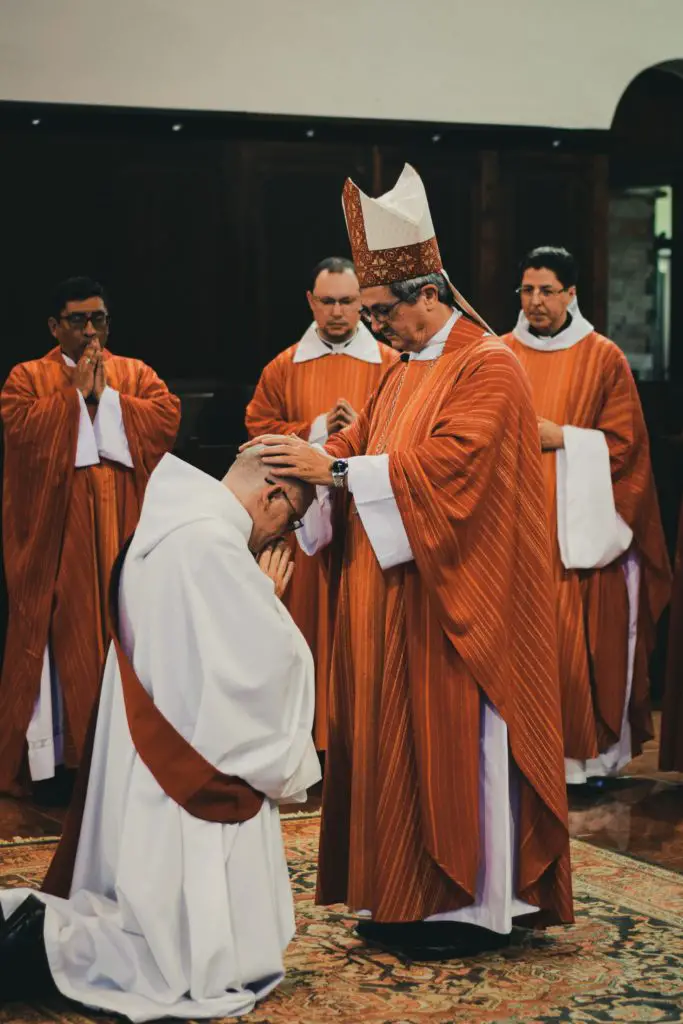
“For every high priest taken from among men is ordained for men in the things that appertain to God, that he may offer up gifts and sacrifices for sins: Who can have compassion on them that are ignorant and that err: because he himself also is compassed with infirmity. And therefore he ought, as for the people, so also for himself, to offer for sins. Neither doth any man take the honour to himself, but he that is called by God, as Aaron was. So Christ also did not glorify himself, that he might be made a high priest: but he that said unto him: Thou art my Son: this day have I begotten thee. As he saith also in another place: Thou art a priest for ever, according to the order of Melchisedech. Who in the days of his flesh, with a strong cry and tears, offering up prayers and supplications to him that was able to save him from death, was heard for his reverence. And whereas indeed he was the Son of God, he learned obedience by the things which he suffered. And being consummated, he became, to all that obey him, the cause of eternal salvation: Called by God a high priest, according to the order of Melchisedech.” (Hebrews 5:1-10).
Priesthood is everlasting and for the salvation of those who come to God by Him
“But this, for that he continueth for ever, hath an everlasting priesthood: Whereby he is able also to save for ever them that come to God by him; always living to make intercession for us.” (Hebrews 7:24-25).
The above are just some example of the continued ordination of Priesthood and the elevation of some to overseer of the Church known as Bishop.
These is no doubt that the Priesthood is both Apostolic and part of the Church’s Tradition. In addition, the Church is hierarchical and designed through the actions of Jesus, who instituted the Sacrament of Holy Orders through St Peter and the Apostles.
Does the Sacrament of Holy Orders give Grace?
St Paul in his letter to Timothy states clearly that the Priesthood through the imposition of the laying of hands gives grace.
“Neglect not the grace that is in thee, which was given thee by prophecy, with imposition of the hands of the priesthood.” (1 Timothy 4:14).
And again:“For which cause I admonish thee that thou stir up the grace of God which is in thee by the imposition of my hands.” (2 Timothy 1:6).
What are the different levels of the Holy Orders?
The Sacrament of Holy Orders consists of three main levels being Bishop, Priest and Deacon, however the Roman Catholic Church through Holy Memory recognised seven levels – three major orders and four minor orders.
St Thomas in Summa Theologica reflects on the hierarchical structure and order of the Sacrament of Holy Orders by answering the number of objections with reference to 1 Corinthians 12:4-11.
He responds by corresponding each of these ministries to an order:
“… word of wisdom belongs to the bishop, ….; the word of knowledge to the priest, …. faith to the deacon, ….; the working of miracles to the subdeacon,. …; interpretation of speeches to the acolyte, …; the grace of healing to the exorcist; diverse kinds of tongues to the psalmist; prophecy to the reader; and the discerning of spirits to the doorkeeper, … There are distributions (Douay,—diversities) of graces. Moreover the episcopate and the office of psalmist are included, which are not Orders. … the sacrament of Order is directed to the sacrament of the Eucharist, which is the sacrament of sacraments, …”
Note that the role of Bishop was not considered as part of the Orders. This is also excluded in the Council of Trent. The Bishop, whilst having the power to consecrate new priests, does not add a new character nor a special power over the eucharist, nor is there a new sacrament.
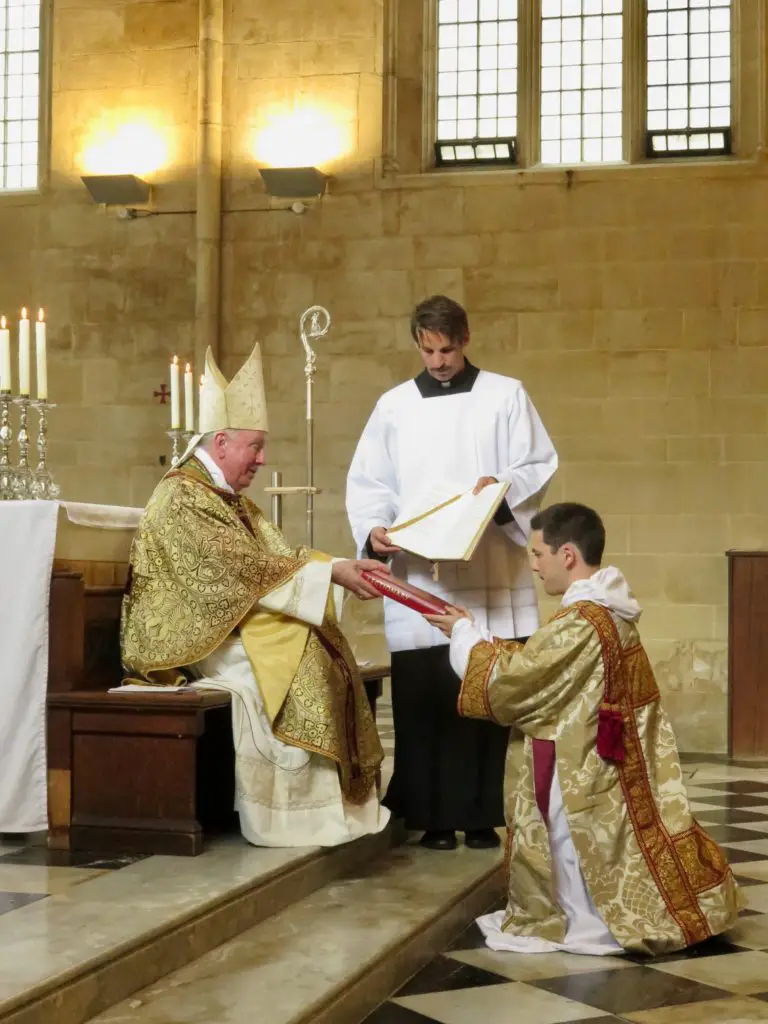
The Council of Trent states:
“For the sacred Scriptures make open mention not only of priests, but also of deacons; and teach, in the most weighty terms, what things are especially to be attended to in the ordination thereof; and, from the very beginning of the Church, the names of the following orders, and the proper ministrations of each one of them, to wit, those of subdeacon, acolyth, exorcist, reader, and door-keeper, are known to have been in use; though not of equal rank: for the subdeaconship is classed amongst the greater orders by the fathers and sacred councils, wherein also we very often read of the other inferior orders.” (Theodore Alois Buckley, The Canons and Decrees of the Council of Trent, 1851, 157–158.)
Therefore, in the Old Rite of the Catholic Church there are seven orders and are divided into Major and Minor orders.
Major Orders
– Priest. – Deacon. -Sub-Deacon.
Minor Orders
– Acolyte. – Exorcist. – Reader. -Door-Keeper.
However, the Sacrament of Holy Orders, especially in the Roman Catholic Church, pertains to Bishop, Priest and Deacon.
What is the title of ‘cardinal’?
Whilst the title of Cardinal is not part of Holy Orders, nevertheless it is worthwhile explaining the concept, its’ origins and purpose. The title today is handed to those in the Catholic Church who She elects for Church duties and to elect the next pope when the seat of Peter is vacant.
What does the word ‘cardinal’ mean?
The word ‘cardinal’ comes from the Latin word ‘cardo’ which means ‘hinge’.
What is the origin of the word ‘cardinal’?
The title was applied to anyone who was attached to a Church. The Cardinal-Priests who were the Parish Priests of various Churches in Rome. In the Roman Church parish churches or Titles seem to have been first instituted in the time of Pope Marcellus (304), Cardinal Deacons had at their care the poor and Cardinal Bishops were created around 769 AD.

From 1567, St Pope Pius V, ordained that the title of Cardinal be exclusively applied to members of the Sacred College of the Roman Catholic Church. These are appointed by the Pope.
Currently, all the Cardinals are either a bishop, archbishop and patriarch, however this was not always the case. They are ranked as princes of the Roman Catholic Church and are responsible for the governance of the Church and for the election of the Successor of St Peter when the Seat of Peter is Vacant. This is called the Conclave.
The Cardinals wear red attire to distinguish their role and title.
What is the title of ‘pope’?

The title of Pope comes from the Latin word ‘papa’ which means ‘father’. The title is attached to the bishop out of his respect as early as the third century. From the 6th Century the title of Papa was used and associated with the Bishop of Rome. From the 8th Century the title was rarely used on any other Church dignitary and was exclusive to the Bishop of Rome from the 11th Century
The Pope is the supreme bishop of the Catholic Church and along with the Cardinals and Bishops, form the Magisterium, where they sanctify, teach, and govern the Church.
NB: Every Pope elected at the conclave is the successor of St Peter.
What is the ‘Form’ and ‘Matter’ of Holy Orders?
The ‘Form’ and ‘Matter’ of Holy Orders will be applied to the three major orders of Bishop, Priest and Deacon, as these are considered currently to constitute Holy Orders.
The Catechism of the Catholic Church states that the matter is the ‘laying of hands’ by the Bishop along with the form being the consecratory prayers:
“Integration into one of these bodies in the Church was accomplished by a rite called ordinatio, a religious and liturgical act which was a consecration, a blessing or a sacrament. Today the word “ordination” is reserved for the sacramental act which integrates a man into the order of bishops, presbyters, or deacons, and goes beyond a simple election, designation, delegation, or institution by the community, for it confers a gift of the Holy Spirit that permits the exercise of a “sacred power” (sacra potestas) which can come only from Christ himself through his Church. Ordination is also called consecratio, for it is a setting apart and an investiture by Christ himself for his Church. The laying on of hands by the bishop, with the consecratory prayer, constitutes the visible sign of this ordination.” (CCC1538).
Further, the Catechism states:
“The essential rite of the sacrament of Holy Orders for all three degrees consists in the bishop’s imposition of hands on the head of the ordinand and in the bishop’s specific consecratory prayer asking God for the outpouring of the Holy Spirit and his gifts proper to the ministry to which the candidate is being ordained.” (CCC1573).
The Sacrament of Holy Orders is the sacrament that anoints a man as a priest. He is a priest in the order of Melchizedek. The Priesthood is the assurance that the Sacraments are continually received by the faithful and the Mass is offered. Jesus instituted the Sacrament of Holy Orders when He gave the authority to the chosen twelve, He called Apostles.
Our Lord wanted to ensure that God’s Grace is available for all to receive worthily, should we choose to.
Let us continue to pray for holy and faithful men to the priesthood.
God be with you.
